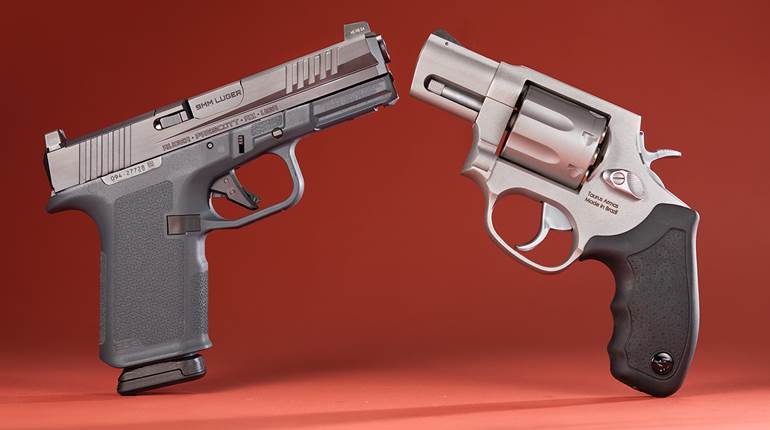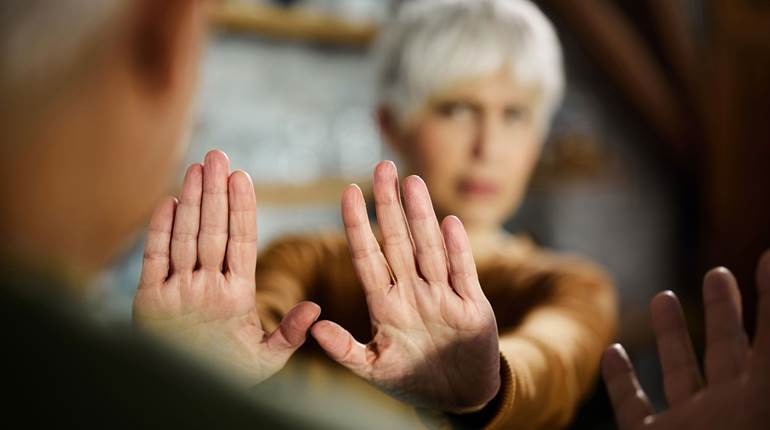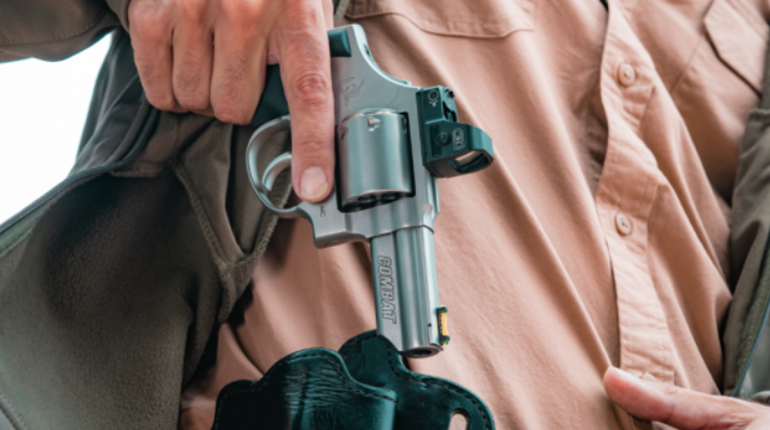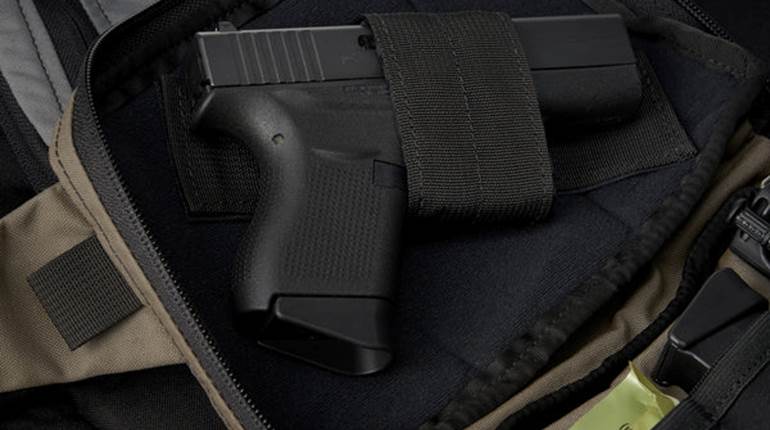
Walking out the front door and heading for the pickup, I noticed that someone had left a plastic water bottle on the hood of the truck. There shouldn't have been anyone else around in this remote area. I immediately went from Yellow to Orange and cautiously moved to investigate.
As I got closer to the truck, scanning in all directions, I saw a man step from around the corner of the house and start in my direction. Using a Command Voice, I ordered him to stop and placed my hand on my 1911 pistol. Ignoring my order, this fellow began to pull a pistol out of the pocket of his overalls. I drew, fired twice, and the stranger went down.
Fortunately, this was not a real-life attack; instead it was part of a force-on-force scenario. I was pretty proud of the way I had dealt with this problem until Range Master Charlie McNeese started his critique.
“I liked the way you immediately alerted on the water bottle”, said McNeese. “But I wonder why you didn't just go back inside the house where you had excellent protective cover, extra guns, extra ammunition and a telephone.” Duh!
I had focused on the opportunity to hunt bad guys instead of concentrating on protecting myself, my family and my home. I had lost the proper perspective of the true task at hand. Sadly, we occasionally read about this sort of poor judgment in the news.
Consider the fellow who arms himself against an armed invader. Not a problem. But when he chases the invader out of the house and down the street, before shooting him in the back, an obvious problem exists.
The same can be said for the motorist faced with an attempted car jacking. He puts the car in Park and gets out to deal with the threat. In most cases, the smartest thing to do is to put the car in Drive and get away from the threat.
Most of these incidents are not so much a case of the person intentionally doing something foolish or wrong. It is often a case of the person just failing to think tactically. It can also be the case of a person thinking emotionally instead of logically.
Faced with a dangerous attack, it is natural to feel fear. We are taught to push through fear with anger. But you will notice the use of the word “anger” and not “rage.” A person who is enraged is one who is not thinking rationally and is generally so focused on overcoming the threat that he no longer sees the big picture. Unfortunately, the police, prosecutors, and juries will hold that person to responding in a reasonable manner. The fact that he lost his temper is probably not going to be a good defense.
All of this is easier to say than it is to do. When we are faced with a violent threat, our blood pressure goes up and our emotions go crazy. We often see one solution and we follow that solution even when it is no longer a reasonable response. Although it is difficult, we can force ourselves to stay as calm as possible and think tactically and legally. Soldiers have done it, police officers have done it and armed citizens have done it.
This is the reason that planning and training are so important. They not only teach us what we should do, but they also teach us what we shouldn't do. The person who hasn't planned and trained can be expected to take the “I can't believe this is happening to me” approach when faced with violence. The trained individual is more likely to take the position of “They told me this could happen and I know just what to do about it.”
Which person will you be when the attack comes? Keep the proper perspective in your personal defense.





































